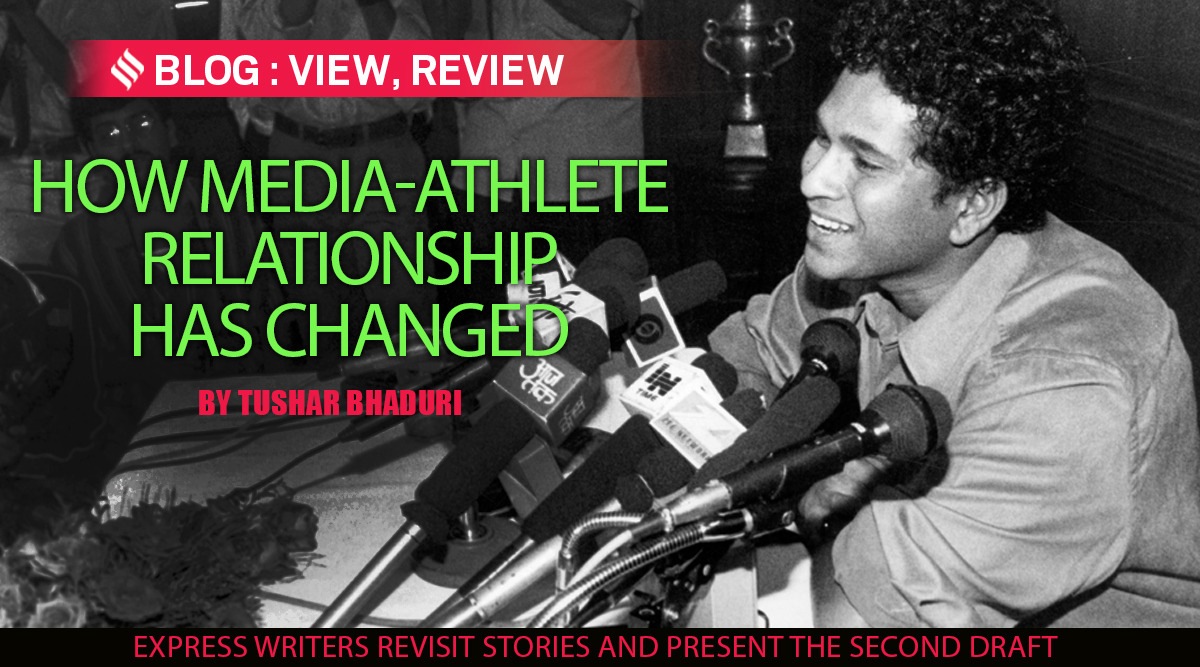 The proliferation of media outlets sometimes results in laxity of journalistic rigour and professional ethics. (File)
The proliferation of media outlets sometimes results in laxity of journalistic rigour and professional ethics. (File) There used to be a time when journalists enjoyed unhindered access to players on the ground. They could be approached after play and depending on the time at both parties’ disposal and the quality of the interaction, it could be an informative and worthwhile experience.
Those were the days when neither side took itself too seriously but believed they, and the other party, had a job to do – to bring a complete picture of the game to the fans and readers (those days, media largely meant print). So, talking to the press, whenever possible, and respecting a player’s wish when he/she couldn’t, was part of professional etiquette. There was rarely a case of someone thinking he/she had become bigger than the game.
After all of my contributions to Indian cricket..this is what I face from a so called “Respected” journalist! This is where the journalism has gone. pic.twitter.com/woVyq1sOZX
— Wriddhiman Saha (@Wriddhipops) February 19, 2022
But those were more innocent times. When sport – and cricket in particular – hadn’t become the big business it did later, almost an economy in itself with large and small stakes for everyone involved. Sports was one of the beats to be covered, hardly front-page news unless something extraordinary took place. Matters pertaining to selection or administrative affairs didn’t command as much attention beyond the sports pages as they do now. In other words, sport was just that, a sport.
Change over the years
But now, the proliferation of media outlets sometimes results in laxity of journalistic rigour and professional ethics. After all, every mediaperson may not be a journalist in the strictest definition of the word, and every sportsperson may not treat the media with the requisite respect.
With sport becoming big business and top athletes becoming celebrities, every interaction and appearance is monetised and there’s scope for garnering one’s own pound of flesh. Relations between players and media often become transactional in nature with the underlying question being: ‘What is in it for me?’ or ‘How can you be useful to me?’
Access often equates to influence and power. Whereas previously, sources were cultivated to get news and inside information, now the ultimate objective may be an ‘exclusive’ or interview which may become an end in itself to attract eyeballs rather than unearthing something new.
1/3- I was hurt and offended. I thought not to tolerate such kind of behaviour and didn’t want anyone to go through these kind of bullying. I decided I will go out and expose the chat in public eye, but not his/her name
— Wriddhiman Saha (@Wriddhipops) February 22, 2022
Nor is this arrangement a one-way street. Sometimes, out-of-favour players may seek ‘influential’ journalists or columnists in their comeback bid. So, when a ‘respected’ journalist tells a player left out of the squad that ‘choose whoever can help the most’, it is implicit that someone thinks matters of selection are open to outside influence and a bit of quid pro quo can go a long way. And the remark that ‘I don’t take insults kindly. And I will remember this. This wasn’t something ypu should have done (sic)’ implies that influence can also be used to a player’s detriment. Tennis star Naomi Osaka’s mental health suffered from interactions with journalists that were much less threatening in nature.
Even if someone is not replying to text messages or calling back, it’s tough for someone used to getting their way to accept that the other person may not be willing to take the bait.
Direct messaging
We live in interesting times when those with influence and authority often bypass traditional media outlets to communicate with their chosen target audience. The reluctance of several recent Indian captains to front up to the media before and after matches is well known. Maybe, star Indian cricketers believe journalists who ask probing and sometimes uncomfortable questions are a nuisance and unnecessary distraction. More so, when they can better ‘engage’ with fans through press releases, advertisements and social media. It, of course, doesn’t prevent them from obliging chosen mediapersons for one-on-one interactions when it suits them. Much like hitherto inaccessible film stars obliging media outlets before a mega release.
This may prompt many in the media to conclude that they also have every right to ‘make full use’ of their contacts with players. With several cricketers moving to media after retirement – be it as commentators, experts on news channels or columnists – and the unavoidable overlap of interests, it may result in the printed or spoken word being less than 100 per cent honest.
Also, when several entities in the ecosystem have business stakes that may be affected by who takes the field and what goes on inside it, there’s an inevitable blurring of lines between the sporting and commercial aspects.
Hence, when a mediaperson feels a cricketer – more so one who has been dropped – is obliged to give an interview, or at least return a missed call, the inference is that it may also impact prospects in post-playing days.
The relation between a journalist and contact – the latter sometimes called a source – is traditionally a voluntary and delicate one. It is cultivated over time and based on mutual trust. In the sporting sphere, official access to top players is often more regulated, and to get a top player for an interaction otherwise these days is dependent on where the balance of power lies. In other words, the party who needs it more will be less likely to dictate terms. But a little respect in bilateral interactions never goes amiss.
- The Indian Express website has been rated GREEN for its credibility and trustworthiness by Newsguard, a global service that rates news sources for their journalistic standards.

